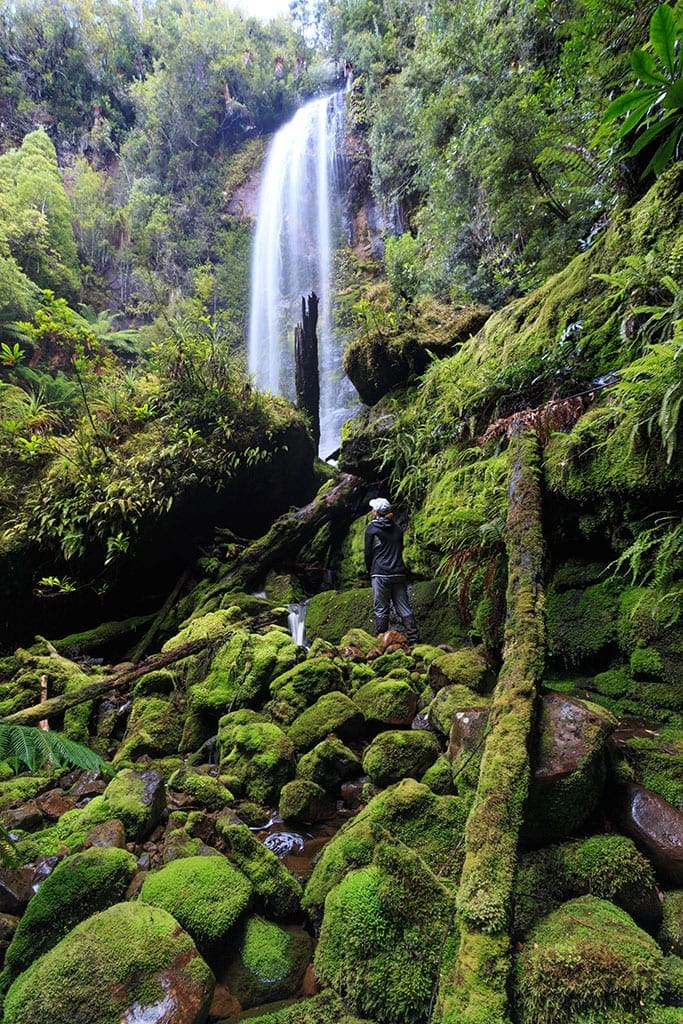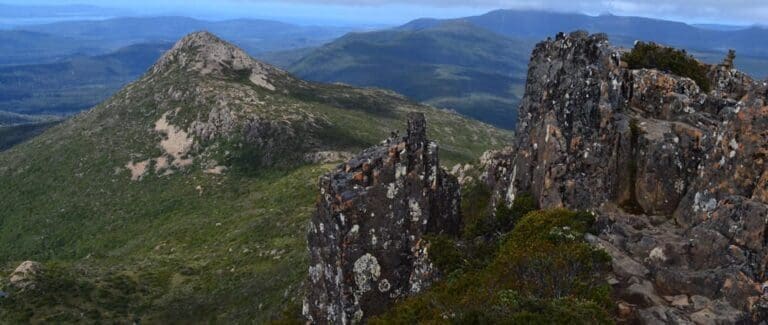Trail Fast Facts
Granite Beach Falls is a 40km, grade 4 hike in Southwest National Park, Tasmania. This hike typically takes 4 days to complete.
Hike Overview
The Granite Beach Falls traverses the eastern end of the popular South Coast Track from Cockle Creek to Granite Beach (east) Campsite. The track is reasonably well defined and low growing vegetation means that great views can be enjoyed for most of the hike. At the end of the beach you'll find the Granite Beach Falls. They are only small but enough to get your head under. Just before the waterfall is a steep, tricky rock climb up to the top of the waterfall. The 1.4 km long sandy beach is backed by densely vegetated slopes, which commence at the rear of the beach and gradually rise to over 500 m along the South Cape Range, with three creeks including Sandstone Creek draining down the backing slopes to the beach. The camp site is located at the eastern end of the beach.
Suggested Itinerary
Day 1: Cockle Creek to South Cape Rivulet
Day 2: South Cape Rivulet to Granite Beach
Day 3: Granite Beach to South Cape Rivulet
Day 4: South Cape Rivulet to Cockle Creek
Photography by Caedence Kuepper
Track Grade
Grade 4 (Hard) - Challenging Walks for Experienced Walkers: Grade 4 on the AWTGS signifies challenging walking tracks. Bushwalking experience is recommended for these tracks, which may be long, rough, and very steep. Directional signage may be limited, requiring a good sense of navigation. These walks are suited for experienced walkers who are comfortable with steeper inclines, rougher terrain, and potentially longer distances.
Map and GPX file
Max elevation: 463 m
Min elevation: 4 m
Total climbing: 1926 m
Total descent: -1926 m
Trailhead
Sorry, no records were found. Please adjust your search criteria and try again.
Sorry, unable to load the Maps API.
Getting there
Cockle Creek is a 2hr drive (121km) south of Hobart on the fringe of the Tasmanian Wilderness World Heritage Area.
Photo gallery
If you have any photos from this hike and are happy to share them, please upload your .jpg files here.
Please note: Uploading photos does not transfer ownership of copyright away from you. If requested, you will be credited for any photos you provide and can ask they be deleted at any time.
About the region
Tasmania's largest expanse of wilderness is in Southwest National Park a remote and rugged landscape in the heart of the Tasmanian Wilderness World Heritage Area. Home to majestic Huon pine, sassafras, celery top and myrtle, the region is awash with the distinctive fragrances of the Tasmanian forest.
Cockle Creek is the furthest point south that you can drive in Australia and the entry point to the South West National Park in Tasmania's Wilderness World Heritage Area. The South Coast Track, one of Tasmania's great hikes begins - or ends - here.
In Southwest National Park, you'll find one of Tasmania's most challenging wilderness walks, the multi-day South Coast Track. There are also endless shorter walks to take you up and over mountains and out to the coast. For a real ends-of-the-Earth' experience, travel to Australia's southernmost point accessible by road, Cockle Creek, where a day walk to South Cape Bay allows walkers to immerse themselves in the raw power of this wilderness landscape.
Similar trails nearby
Looking for things to do in Southwest National Park? Try these hikes or bushwalks.
Explore Safe
While planning your hike, it’s important to check official government sources for updated information, temporary closures and trail access requirements. Before hitting the trail, check local weather and bushfire advice for planned burns and bushfire warnings and let someone know before you go. Plan ahead and hike safely.
Let someone know
Adventure with peace of mind: Fill out your trip intentions form. Before you hit the trail, fill out an online form to privately send important details about your hike to your family or friends. If you don’t return on time, they can easily alert emergency services, preventing worry and ensuring a swift response. Hike with peace of mind and enjoy your outdoor adventure to the fullest. Be smart, be safe: Register your plans here.
Gear to consider
What you carry in your pack will depend on the weather, terrain, time of year, type of adventure, and personal preferences. Having trouble deciding what gear’s right for you? My free planning, food and packing checklists provide an introduction to things your could consider (as well as the Ten Essentials) on your day, overnight and multi-day adventures. Customise your kit according to your personal needs, always considering safety first.
Suggest an edit
Trail changed? New features discovered? Has the route changed? Trail permanently closed? Help fellow hikers by suggesting edits! Click above to update route descriptions, GPX file, trail features (like boardwalks), or access conditions (like parking availability). Help me keep the trails info fresh!
Weather
Acknowledgement of Country
Trail Hiking Australia acknowledges the Traditional Owners of the lands on which we hike and pay respects to their Elders, past and present, and we acknowledge the First Nations people of other communities who may be here today.






